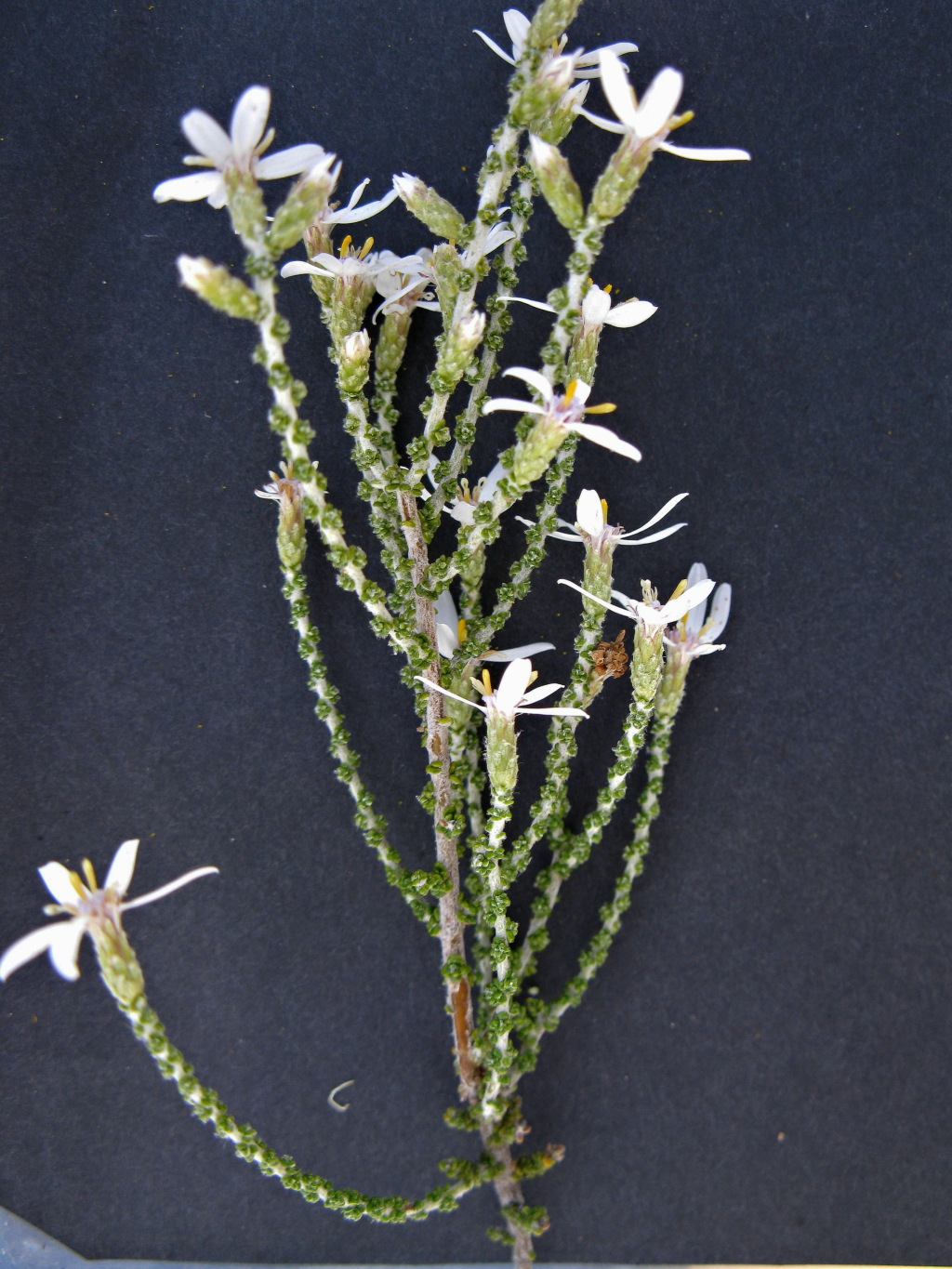Olearia lepidophylla
(Pers.) Benth. Club-moss Daisy-bushCompact or twiggy shrub to c. 0.5(–1.3) m high; branchlets densely white-cottony and glandular. Leaves alternate, sessile, orbicular to broad-ovate, to 1(–2) mm long, 0.7 mm wide, densely clustered (but clusters often virtually contiguous), the outermost leaves of each cluster reflexed against stem, each cluster typically 0.8–1.5 mm diam.; upper surface green, very convex, glabrous or sparsely cottony, sometimes glandular; lower surface densely white-cottony, usually glandular; margins revolute. Capitula sessile, solitary, terminating short lateral branchlets 6–12 mm diam.; involucre narrowly conical, 3–4(–5) mm long; bracts 3–4-seriate, graduating, acute to obtuse, cottony (and often glandular) all over or subapically. Ray florets 4–7, white, ligules 1.5–4 mm long; disc florets 4–6, yellow. Cypsela c. cylindric, 2–2.5 mm long, with mixed simple hairs and glands; pappus bristles whitish, 3–4 mm long. Flowers Mar.–Jun.
LoM, MuM, Wim, VVP, RobP, MuF, GipP, OtP, GGr, EGL, VAlp. Also SA, NSW, Tas. In Victoria chiefly a species of sandy mallee communities in the far north-west, but with disjunct occurrences along the coast near Moonlight Head and Barwon Heads (similarly, coastal populations are known from northern Tasmania, including King Island) and in the east.
Coastal plants differ slightly from those of the mallee in their taller habit (to 1.3 m), longer leaves (to 2 mm) and longer, relatively broader involucral bracts.
Walsh, N.G.; Lander, N.S. (1999). Olearia. In: Walsh, N.G.; Entwisle, T.J., Flora of Victoria Vol. 4, Cornaceae to Asteraceae, pp. 886–912. Inkata Press, Melbourne.
 Spinning
Spinning


